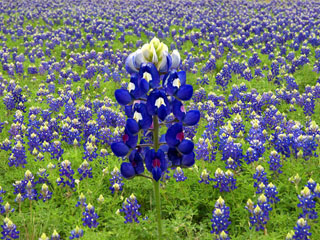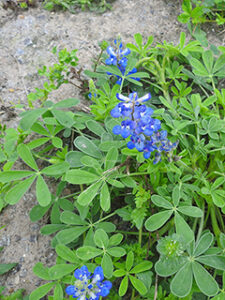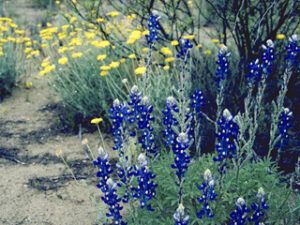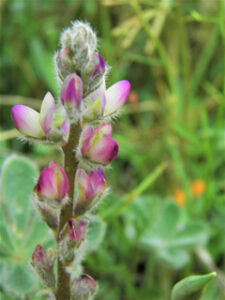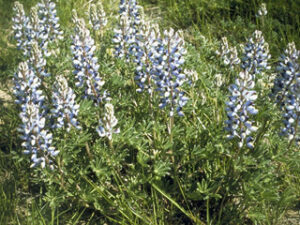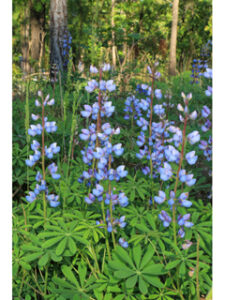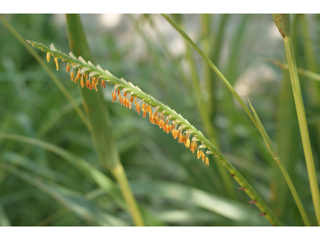It’s that time of year again—when Texas roadsides turn into a rolling sea of blue, and folks pull over just to snap a photo in the flowers. Yep, bluebonnet season is here! These beloved blooms aren’t just a treat for the eyes—they’re a deep-rooted part of Texas pride, native ecology, and even local legend.
But did you know there’s more than one kind of bluebonnet growing across our big ol’ state? From the classic Hill Country favorite to the towering beauties of West Texas, there’s a surprising amount of bluebonnet diversity worth knowing—especially if you’re a landowner looking to grow some yourself.
Let’s dive into the blooms, the best times to see them, and all the myths, facts, and wildflower wisdom that come with our most iconic Texas wildflower.
Meet the Texas Bluebonnets
There are six species of bluebonnets (genus Lupinus) that are considered native to Texas. The genus name Lupinus comes from the Latin word lupus, meaning wolf—early botanists mistakenly believed these plants “wolfed” nutrients from the soil. Ironically, they do the opposite: as legumes, bluebonnets fix nitrogen, enriching the soil for other plants.
The name bluebonnet itself is a charming piece of Texas culture, inspired by the flowers’ bonnet-like shape, which resembles the sunbonnets worn by pioneer women. Each species has its own look, habitat, and blooming personality—let’s meet them!
1. Lupinus texensis – Texas Bluebonnet
This is the bluebonnet you see on postcards and roadside magnets—thick, cone-shaped flower spikes with rich indigo blue petals and a white tip on top. The leaves are distinctly palmate (like fingers on a hand), and the plants form dense carpets. Found throughout Central and Southeast Texas, especially the Hill Country, it’s the most famous and widely planted species.
2. Lupinus subcarnosus – Sandyland Bluebonnet
A more delicate cousin, this species features smaller, paler blue flowers with a looser, more open flower spike. The plant itself is lower-growing and prefers sandy soils, which is where it gets its nickname. It’s native to the Gulf Coast and Southeast Texas and tends to bloom a little earlier than L. texensis.
3. Lupinus havardii – Big Bend Bluebonnet
The showstopper of the desert, this species can grow up to 3 feet tall, towering over the others. Its flower spike is longer and more loosely packed, with deep royal blue blooms that often have a hint of purple. Native to Far West Texas, especially the Big Bend region, it thrives in arid soils and cooler nights.
4. Lupinus concinnus – Bajada Bluebonnet
A true desert dweller, this species is short and fuzzy, with small, pale lavender to pinkish-blue flowers. It tends to grow in scattered clusters rather than dense patches and often blooms earlier than other species. Found in West Texas in dry washes and desert flats, it’s easy to miss unless you’re looking closely.
5. Lupinus plattensis – Nebraska Lupine
More common in the northern Panhandle, this species is taller and spindlier, with light blue to bluish-purple flowers and a narrower spike. The foliage is often more slender, and it prefers sandy or disturbed soils. It’s less showy than its Hill Country cousins, but still a native Texan.
6. Lupinus perennis – Sundial Lupine
Rare in Texas and more common in the eastern U.S., this lupine has soft violet-blue flowers with a more delicate, graceful shape. The flower spikes are loose and airy, and the plant thrives in well-drained, slightly acidic soils. Occasionally found in East Texas Pineywoods, but not a major player statewide.
When Do Bluebonnets Bloom in Texas?
Bluebonnets in Texas typically bloom from mid-March through late April, with peak color often arriving in early April. Bloom times vary slightly by region and yearly weather patterns.
- Central Texas (Hill Country): Late March to early April
- South Texas: As early as early March
- North and East Texas: Late March into mid-April
- West Texas (Big Bend region): Early to late April
Cooler temperatures and rainfall in late winter can delay or extend the bloom season. To see the best displays, plan a visit in early April, especially around areas like Burnet, Llano, and Ennis.
Why Bluebonnets Matter
Beyond their beauty, bluebonnets play a role in soil health and pollinator support. As members of the legume family, they help fix nitrogen in the soil, improving fertility for future plants. They also provide early spring nectar for bees and butterflies.
Is It Illegal to Pick Bluebonnets in Texas?
It’s a common myth that it’s illegal to pick bluebonnets, but here’s the truth:
- There is no state law specifically prohibiting picking bluebonnets.
- It is illegal to pick any plant in Texas State Parks.
- It is illegal to trespass on private property to access bluebonnet fields.
- Roadside picking is discouraged by TxDOT to preserve future blooms and for safety reasons.
So while you can pick them legally in some public areas, it’s best to enjoy with care—and let the seeds fall naturally to keep the fields blooming for years to come.
Other Common Questions About Bluebonnets
Are bluebonnets toxic?
Yes, bluebonnets are poisonous if ingested by humans or animals. While touching them is safe, don’t let pets or children eat them.
Can I grow bluebonnets on my property?
Absolutely! They’re well-suited for Texas soils. Plant seeds in the fall (Sept–Nov), choose a sunny spot with well-drained soil, and let nature do the rest. Lupinus texensis is best for most areas.
Is it safe to take photos in bluebonnet fields?
Yes—but be respectful. Watch for snakes and insects, and avoid trampling the flowers so they can reseed. Always get permission before entering private land.
Planting Bluebonnets on Your Land
Texas landowners interested in native landscaping or improving pasture diversity might consider seeding bluebonnets in the fall, typically between September and November. Seeds need time to scarify (break down their tough outer coat) over winter before sprouting in spring. Choose species based on your soil type and region for the best results.




